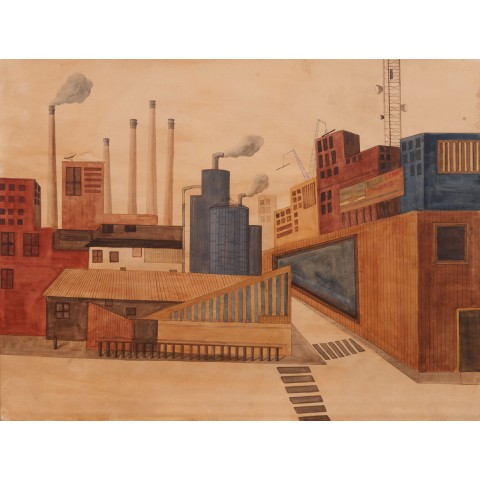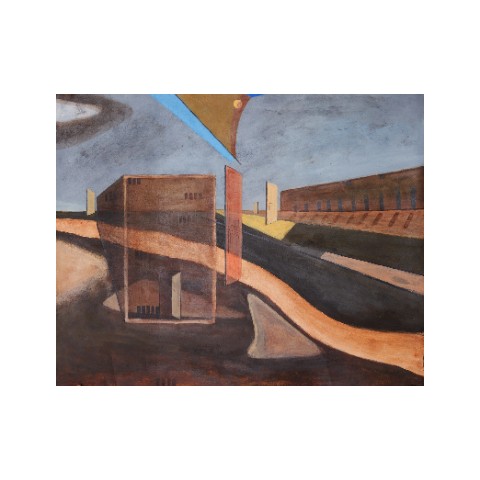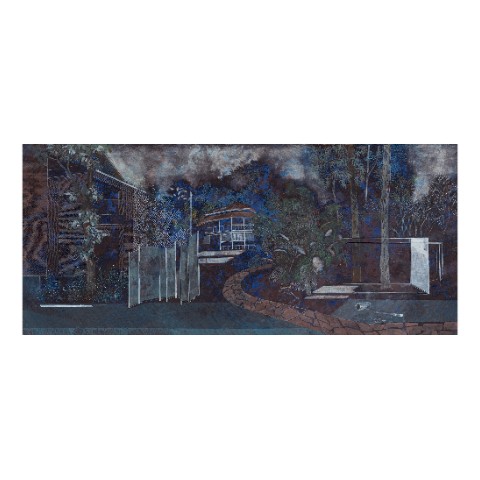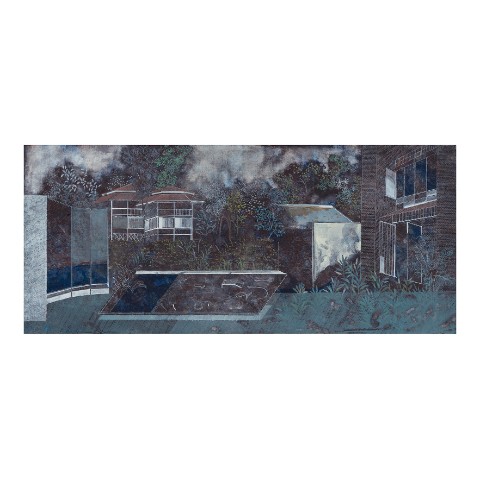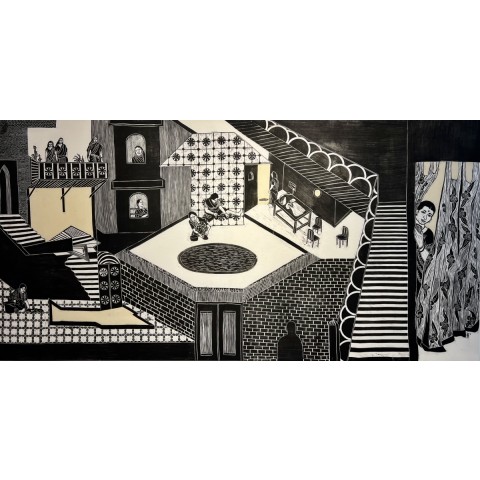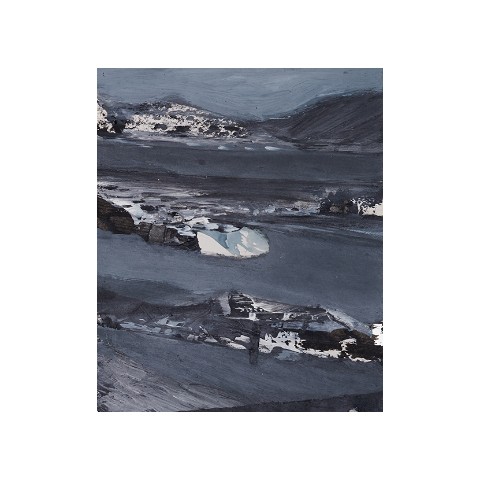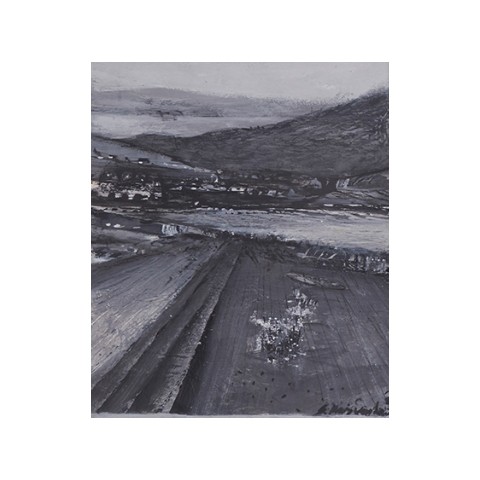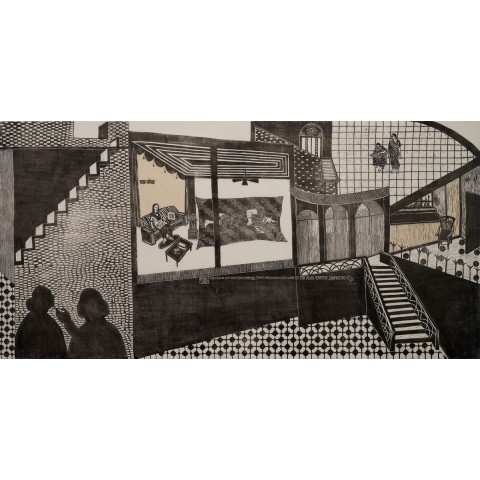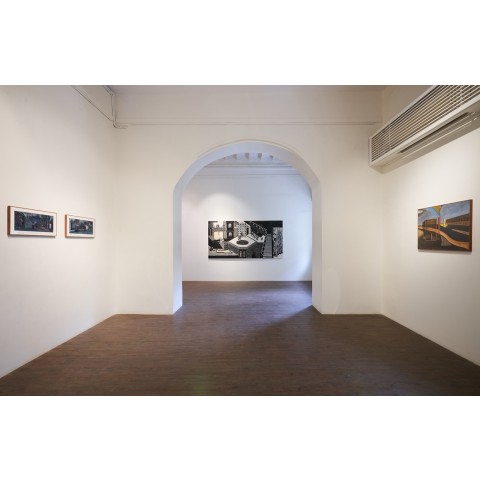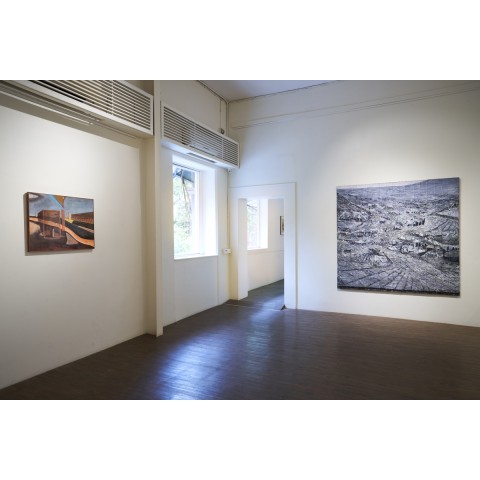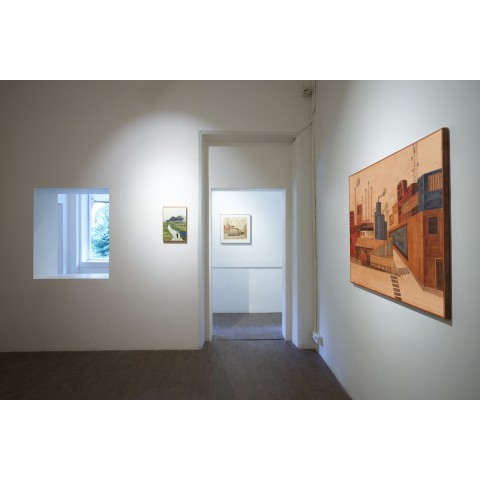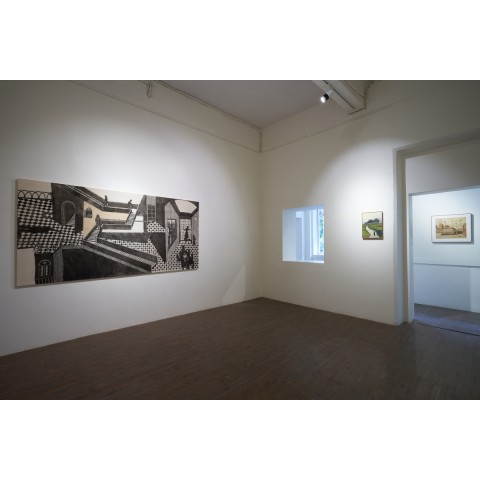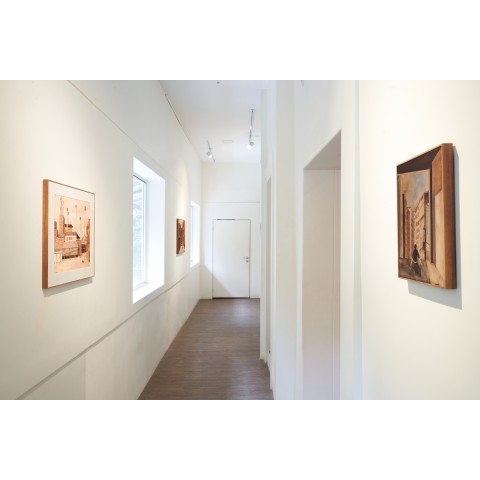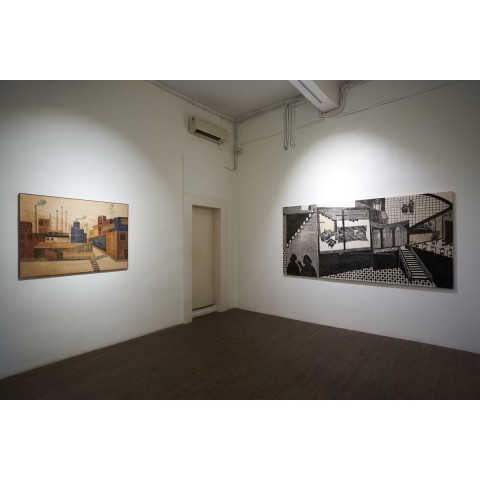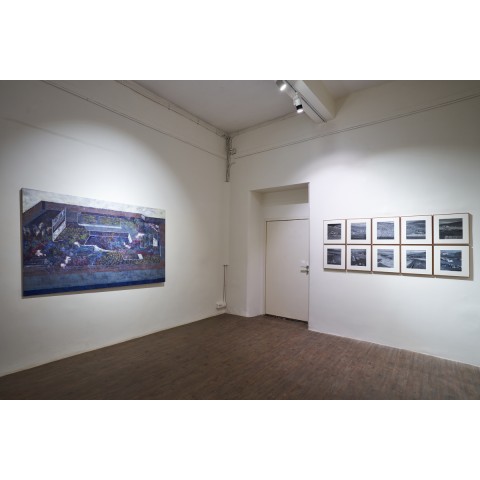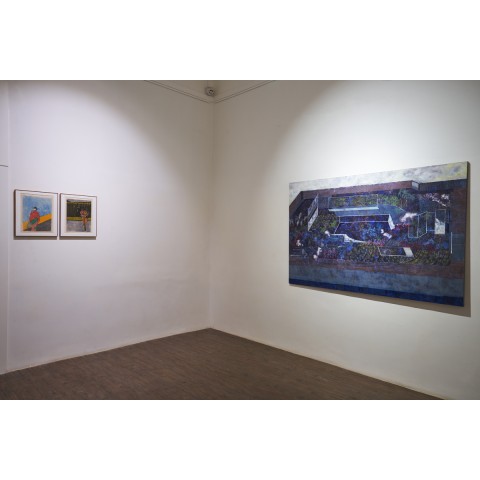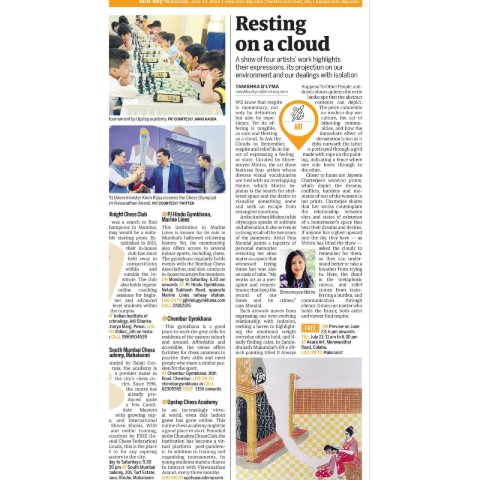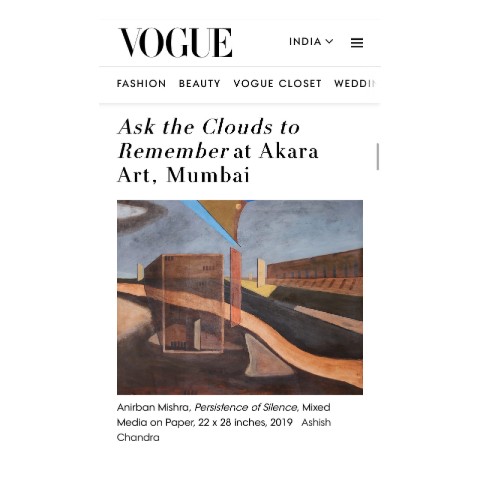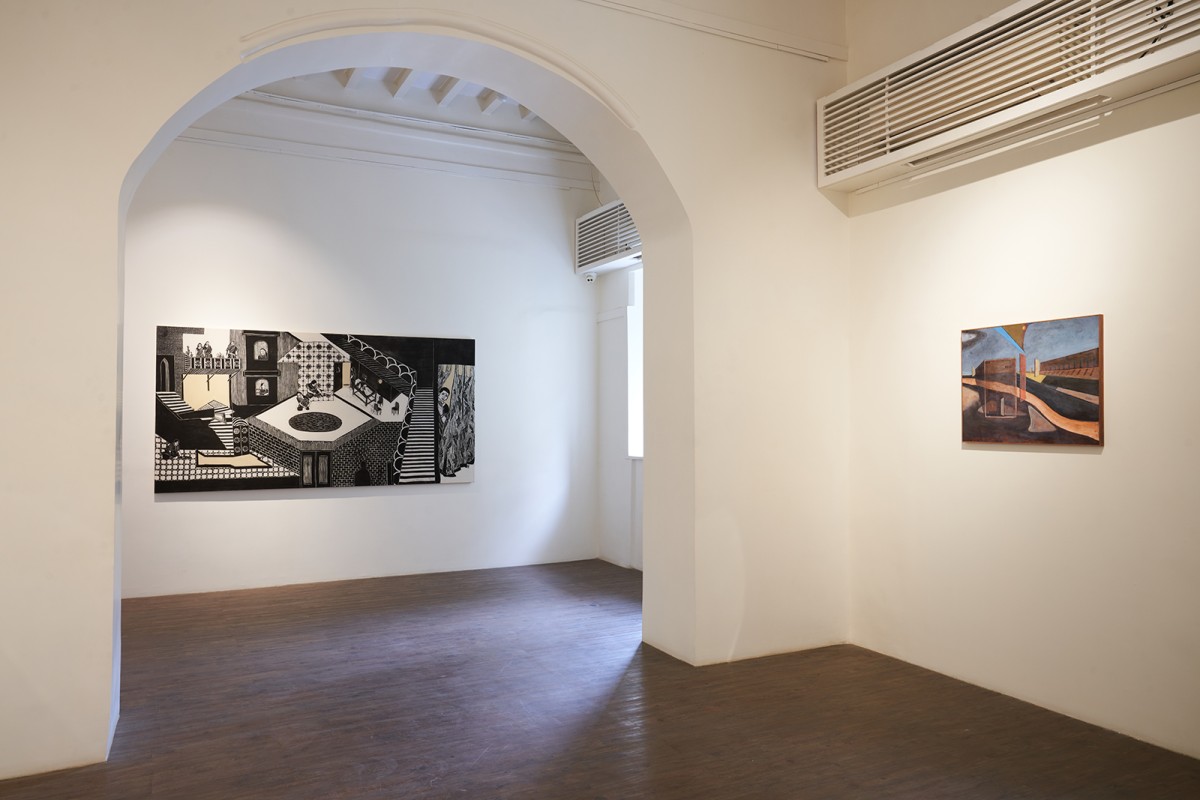
ASK THE CLOUDS TO REMEMBER
June 23 - July 21 , 2022
Exhausted with our entangled emotions it is sometimes
comforting to imagine letting the clouds bear the weight of it. The lightness
of the drifting clouds makes one believe that they can effortlessly bear our
despair, fading memories and the stillness of solitude. ‘Ask the clouds to remember’
suggests a fantasy of desiring a safer place to embrace the simmering thoughts
of the human mind. The exhibition attempts to establish a dialogue between the
visual practices of four artists whose imagery mirrors similar thoughts. The
recent times have been challenging but humanity has found itself hanging on to
hope.
The constant search for a sheltered space, the
desire to visualise something in newer light, has urged these artists to create
this corpus. The artists’ diverse practices project the subtlety of the human
mind, their shifting environment, the isolation and the sublime beauty of
landscapes through their individually expressive and nuanced vocabularies.
There is a sense of quietness in Anirban
Mishra’s coffee washed cityscapes. With a very European colour palette,
Anirban invites viewers to experience the raw human emotions of solitude, melancholia
and a sense of alienation which city life offers. Hailing from a small town in
Bengal, the artist always struggled to be a part of the fast moving urban metropolis.
From being in awe of the vastness of a city to finding his own space there –
the constant negotiation has been a discovering process for Anirban’s practice,
which is mirrored in his visuals. Anirban’s architectural cityscapes are mostly
devoid of human presence, one can only spot a cat or a lone figure somewhere.
These sublime cityscapes were mainly produced during the lockdown when the
entire world was succumbing to the extremity of isolation. One can’t help but
draw a comparison with Edward Hopper whose century old cityscapes still remain
a trademark of city isolation.
‘Observer’ reflects a similar sense of
wonder and isolation. We see a young boy sitting reluctantly at the window with
his back to the viewer, gazing at the city ahead. The city sky is wearing a
coat of dusk and one can see faraway rows of hazy windows of the populated skyscrapers,
hanging like the backdrop of a stage theatre. The distance between the boy and
the buildings emphasize the sheer sense of detachment one feels in the lack of
companionship. This reminds one of Olivia Laing, the novelist and cultural
critic who writes in her book The Lonely City, “Cities can be lonely
places, and in admitting this we see that loneliness doesn’t necessarily
require physical solitude, but rather an absence or paucity of connection,
closeness, kinship: an inability for one reason or another to find as much
intimacy as is desired.”
Baroda based Puja Mondal’s works carry
a luminous simplicity. With a miniature style of drawing, Puja creates a
tapestry of personal memories. The series ‘Oasis
of Calm During Conflict’ revolves around the architectural space of the
artist’s alma mater. The works are an ode to the institution that has been a
witness of many trying times but has been instrumental in shaping the artist’s
identity and teaching her the significance of free thinking.
‘Bloody Leaves, smoke and smell of Marigold’
is a memoir of beauty and terror characterised by intrinsic detailing. One can
see an enchanting garden filled with trees and foliage, exuding a sense of calmness,
only to tempt the viewer to introspect it closely. The work highlights the beauty
and the vulnerability – the duality of mankind which exists simultaneously. After
close observation one can discover the detailed miniature imagery camouflaged
in this bewitching yard, revealing disharmony, chaos, danger and death. The
architectural constructions with their weary, washed off colours and
interjections of bloody leaves, broken unkempt trees, knives and loaded guns
hidden along the dark patches of the land indicate the impending terror waiting
to unfold. The work expresses the starkness of human violence which silently
hides deep within us.
Calcutta based Samindranath Majumdar’s monochromatic
abstract rendition of landscapes reminds one of Helen Frankenthaler’s words “My
pictures are full of climates, abstract climates. They're not nature per se,
but a feeling.”
The grey toned works broadly titled ‘Settled/ Unsettled’ are a result of a perpetual
negotiations of colour, space and time. There is a sense of performance and a
poetic language in the making of these works, a constant exchange of dialogue
between the painter and his work. One can follow the trail of the thick
brushstrokes and locate the anatomy of landscapes taking shape; the riverbed,
the huts, the land, the waves, the changing light and the dark coated sky…settled
on the paper like notations of a symphony in performance.
‘Everything happens to the other side’
is a powerful commentary on modern day war culture. At first sight the subdued temperature of the
colours emanates a sense of tranquillity and makes one’s mind wander off to a
faraway land. But once physically distanced from the work, one can notice a typical war landscape painted in dense impasto
brushstrokes. Snow capped mountains standing in rows, a rough bumpy path running
in-between and tiny war base-camps nestled in a queue on each side. A thick rope used as a grid creates an
impression of a barbed wire fence, keeping us, the viewers, on the other side of
the war, making us mere spectators of the impending violence happening on the
other side.
Bangalore based artist Jayeeta Chatterjee developed an interest in the labyrinth
of urban interior architecture while growing up in suburban Kolkata. Her works
concern the private and public space of an urban culture. Home interiors and
the mundane life of homemakers finds a significant role in her practice.
‘Ghare Baire’, a large monochromatic wood
cut print displays the sight of everyday middle class homes. Resonating more like
a backdrop of an 80’s Indian cinema, it is spatially divided into the different
corners of a home, capturing women in their private spaces performing everyday
chores. Chequered tiled floors, wooden staircases and a lone chair lying in a
corner become the props through which we get a glimpse into their ordinary lives.
Fragmented images of women from the artist’s
childhood memories and her recent observations of various geographies finds a
way into her oeuvre. Snippets of two women exchanging their humdrum routine, a woman
resting, perhaps after finishing her morning chores, one watching TV, traces and
documents the ordinary nuances of their day-to-day lives lived within a personal
space. One cannot help but feel like a spectator
meandering through the multiple perspectives of the image and witnessing the privacy
of a home.
Jayeeta’s practice also highlights the
complexities of the overlooked labour of the middle class women in their daily
life and sheds light on the intricacies and the beauty of the prosaic lifestyle
these women live.
Curated by Shreemoyee Moitra
